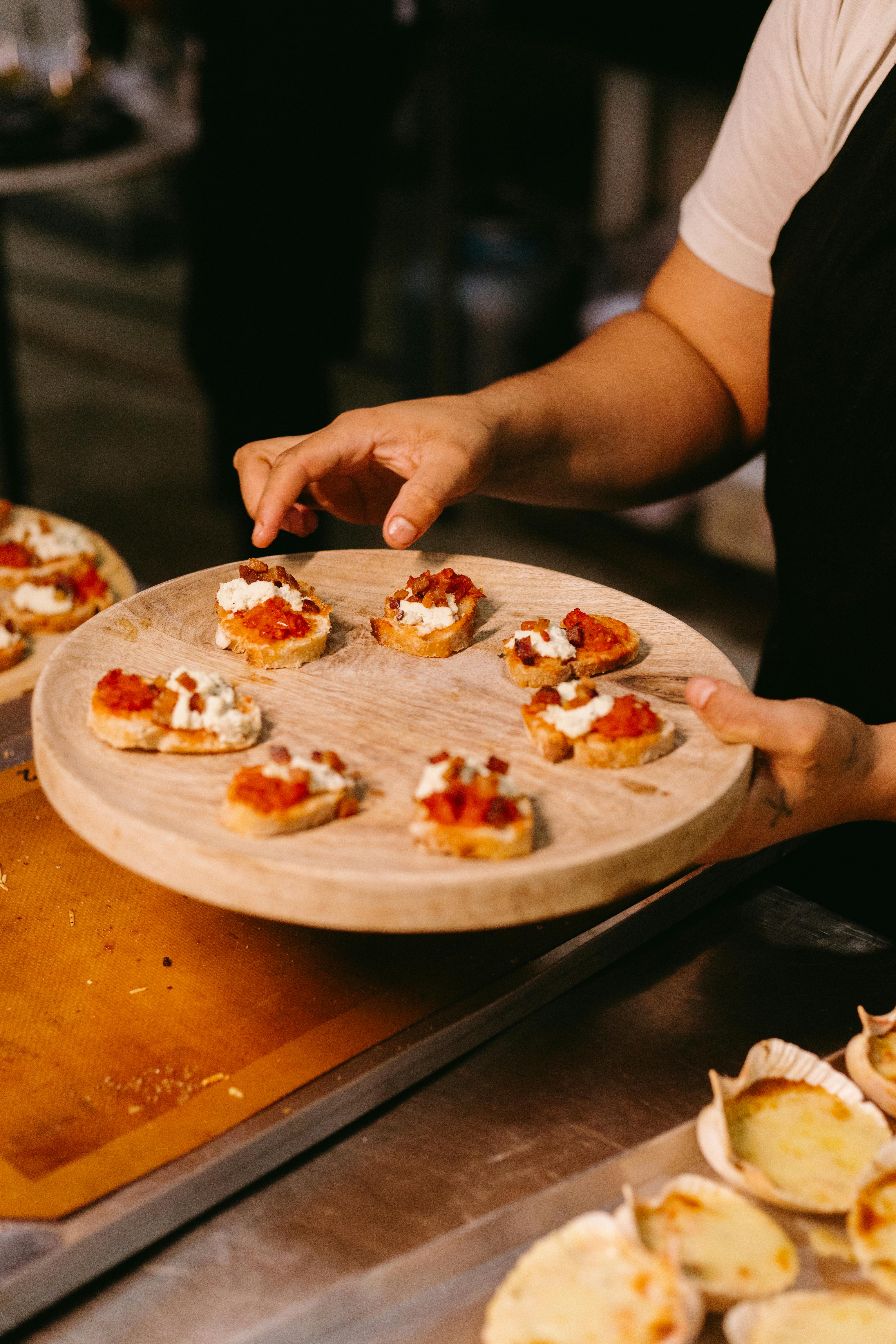Indulge your taste buds and elevate your culinary skills with the help of Tastepan’s expert cooking tips and techniques. Discover the art of cooking with wine and unlock a world of elegance and flavor in your dishes. From rich and hearty stews to delicate sauces and marinades, incorporating wine into your cooking repertoire will take your meals to the next level. With our comprehensive guides and instructional videos, you’ll soon be able to master this culinary technique and impress your friends and family with sophisticated and delicious creations. So, grab a bottle of your favorite wine and let’s embark on a journey of culinary excellence together.

Choosing the Right Wine
When it comes to cooking with wine, choosing the right one can make all the difference in elevating your dishes to new heights. Consider the flavor profile of the wine you want to use and how it will complement the other ingredients in your recipe. Whether you’re working with seafood, meat, or desserts, selecting the appropriate wine is crucial for a harmonious balance of flavors.
Consider the flavor profile
Each wine varietal has its own unique flavor profile, with characteristics ranging from fruity and acidic to oaky and robust. When choosing a wine for cooking, consider the flavors you want to enhance in your dish. For example, a crisp and citrusy Sauvignon Blanc can add brightness to seafood dishes, while a full-bodied Cabernet Sauvignon can add depth to meat dishes. Understanding the flavors of different wines will help you make the best choice for your recipe.
Match the wine with the dish
Matching the right wine with your dish can elevate the flavors and create a harmonious pairing. In general, white wines work well with lighter dishes such as seafood and creamy sauces, while red wines shine when paired with meat dishes, rich sauces, and hearty stews. Consider the ingredients and cooking method of your dish and choose a wine that complements them perfectly.
Consider the cooking process
The cooking process also plays a role in determining the type of wine you should use. Certain cooking methods, such as deglazing and reducing wine for sauces, require specific types of wine. Understanding how the wine will interact with the other ingredients during the cooking process is essential for achieving the desired flavor profile in your dishes.
White Wine in Cooking
White wine can be a fantastic addition to many dishes, enhancing flavors and adding a delightful touch of acidity. Here are some ways you can use white wine to elevate your cooking:
Enhancing flavors in seafood dishes
Seafood dishes can benefit greatly from the addition of white wine. The bright acidity of white wine can help enhance the natural flavors of fish and shellfish, bringing out their freshness and adding a delightful zing. When cooking seafood, consider incorporating a dry white wine, such as Chardonnay or Pinot Grigio, into your recipe to enhance the flavors and create a well-balanced dish.
Lightening up creamy sauces
Creamy sauces can sometimes feel heavy on the palate, but adding a splash of white wine can help lighten them up and balance out the richness. The acidity in white wine can cut through the creaminess, adding a fresh and vibrant element to the sauce. Whether you’re making a creamy pasta sauce or a velvety white wine sauce for seafood, incorporating white wine can take your dish to the next level.
Adding brightness to desserts
White wine isn’t just for savory dishes; it can also work wonders in desserts. The subtle sweetness and acidity of white wine can add a bright and nuanced flavor to desserts like fruit-based tarts or poached pears. Consider using a sweeter white wine like Riesling or Moscato to enhance the natural sweetness of the fruit and create a refreshing and sophisticated dessert.

Red Wine in Cooking
Red wine, with its rich and robust flavors, is a staple in many classic meat dishes. Whether you’re braising, stewing, or making a hearty sauce, red wine can add depth and complexity to your cooking. Here are some ways to incorporate red wine into your culinary creations:
Adding depth to meat dishes
Red wine is a perfect companion to meat, enhancing its natural flavors and adding complexity. When marinating or braising meats, incorporating a good-quality red wine like Merlot or Cabernet Sauvignon can tenderize the meat and infuse it with rich, robust flavors. The tannins in red wine can help break down the proteins in the meat, resulting in a melt-in-your-mouth texture and a depth of flavor that is simply unmatched.
Creating rich and savory sauces
Sauces play a crucial role in elevating the flavors of a dish, and red wine can be a game-changer when it comes to creating rich and savory sauces. By deglazing the pan with red wine after cooking meat, you can capture all the delicious pan drippings and incorporate them into a luscious sauce. The bold flavors of red wine add depth and complexity, transforming a simple sauce into a truly remarkable masterpiece.
Infusing flavors in stews and braises
Stews and braises are the perfect comfort foods, and red wine can take them to new heights. Adding red wine to a stew or braise not only imparts a wonderful depth of flavor but also tenderizes the meat and infuses it with the rich flavors of the wine. The slow cooking process allows the wine to meld with the other ingredients, creating a harmonious and satisfying dish.
Using Wine as a Marinade
Marinades are a fantastic way to infuse flavor into meats and vegetables, and wine can be an excellent base for creating a tender and flavorful marinade. Here are some benefits of using wine as a marinade:
Tenderizing meats
The natural acidity in wine can help tenderize meats by breaking down the proteins and connective tissues. Whether you’re marinating steak, chicken, or even tofu, incorporating wine into your marinade can result in a more tender and juicy end product. Choose a wine with a balanced acidity, such as red or white wine, depending on the flavor profile you want to achieve.
Infusing flavors
Marinades not only tenderize meats but also infuse them with delicious flavors. Wine, with its complex flavor profile, can add depth and nuance to your marinade. Experiment with different varietals and herbs to create a marinade that complements your dish perfectly. Red wine can lend a rich and robust flavor, while white wine can add a subtle acidity and brightness.
Adding depth to grilled vegetables
Grilled vegetables are a wonderful addition to any meal, and marinating them in wine can take them to a whole new level. The flavors of the wine seep into the vegetables, enhancing their natural sweetness and adding a hint of sophistication. Consider marinating vegetables like bell peppers, zucchini, and mushrooms in a white wine and herb marinade before grilling to create a flavorful and satisfying side dish.

Reducing Wine for Sauces
Reducing wine for sauces is a technique used to concentrate flavors and create a velvety texture. Here are some benefits of reducing wine for sauces:
Concentrating flavors
Reducing wine involves simmering it until most of the liquid evaporates, resulting in a concentrated flavor. This technique intensifies the flavors and aromas of the wine, making it a perfect base for sauces. Whether you’re making a red wine reduction for steak or a white wine reduction for fish, reducing wine can elevate the flavors of your sauce and take it to new heights.
Creating a velvety texture
Reducing wine not only concentrates flavors but also creates a luxurious and velvety texture in sauces. The natural sugars in the wine caramelize during the reduction process, adding a silky smoothness to the sauce. The reduced wine can be used as a base for sauces like bordelaise or beurre blanc, bringing a luscious and elegant touch to your dishes.
Balancing sweetness and acidity
Reducing wine allows you to balance the sweetness and acidity of the sauce. The sugars in the wine become more pronounced during the reduction process, adding a touch of sweetness to the sauce. By adjusting the amount of reduction, you can achieve the perfect balance between sweetness and acidity, creating a well-rounded and flavorful sauce that complements your dish.
Deglazing with Wine
Deglazing with wine is a technique used to capture the flavorful browned bits left at the bottom of the pan after cooking meat or vegetables. Here are some reasons why deglazing with wine can enhance your cooking:
Capturing pan drippings
Deglazing with wine allows you to capture all the delicious pan drippings and incorporate them into a flavorful sauce. When you cook meat or vegetables, flavorful caramelized bits form on the bottom of the pan. Adding wine to the hot pan loosens these bits, creating a flavorful liquid that can be used as a base for sauces or gravies.
Enhancing the flavor of sauces
The flavorful liquid created by deglazing with wine adds depth and complexity to sauces. The wine not only amplifies the flavors of the pan drippings but also adds its own unique characteristics. Whether you’re making a pan sauce for steak or a sauce for roasted vegetables, deglazing with wine can take your sauce to another level, transforming it into a truly memorable component of your dish.
Adding complexity to gravies
Deglazing with wine can also add complexity to gravies, enhancing their flavors and making them more robust. When making a gravy, deglazing with wine before adding the broth or stock can infuse it with the rich flavors of the wine. The resulting gravy will have a depth and complexity that is sure to impress.
Wine as a Flavor Booster
In addition to being a cooking ingredient, wine can also be used as a finishing touch to add a burst of flavor and elevate the overall dining experience. Here are some ways you can use wine as a flavor booster:
Using as a finishing touch
Adding a splash of wine to a dish right before serving can add a burst of flavor and freshness. Whether you’re drizzling a little white wine over a seafood dish or adding a dash of red wine to a meat sauce, the wine acts as a flavor enhancer, brightening up the dish and adding that extra touch of elegance.
Enhancing the aroma of dishes
Wine has a distinct aroma that can enhance the overall sensory experience of a dish. Just like a sprinkle of herbs or a squeeze of citrus can elevate the aroma of a dish, adding a bit of wine can do the same. When cooking, consider incorporating wine into recipes where the aroma is key, such as risottos or braised dishes, to create a captivating dining experience.
Balancing flavors
Wine can also be used to balance flavors in a dish, especially when it comes to acidity. If a dish is too rich or heavy, a splash of wine can add acidity and brightness, balancing out the flavors and making it more enjoyable. On the other hand, if a dish is too acidic, a touch of wine can add depth and richness, creating a more well-rounded flavor profile.
Wine Pairings with Food
Pairing wine with food is an art, and finding the perfect match can enhance the flavors of both the wine and the dish. Here are some tips for pairing wine with food:
Choosing complementary flavors
When pairing wine with food, look for complementary flavors that enhance each other. Rich and hearty dishes pair well with robust red wines, while light and delicate dishes are best accompanied by crisp and refreshing white wines. Consider the ingredients and flavors of your dish and choose a wine that will complement and elevate them.
Consideration for white and red wines
Both white and red wines can be paired with a variety of dishes, but certain general guidelines can help you make a harmonious pairing. White wines, with their bright acidity, complement seafood, poultry, and creamy sauces. Red wines, with their deep and robust flavors, pair well with red meat, hearty stews, and rich sauces. Experiment with different wine and food combinations to find your own personal favorites.
Exploring dessert wine pairings
Dessert wines are a delightful way to end a meal and can be paired with a variety of sweet treats. Whether you’re enjoying a rich chocolate dessert or a tangy fruit tart, there is a dessert wine that can elevate the flavors and create a perfect harmony. Consider pairing a Port or a Late Harvest Riesling with your dessert to create a truly indulgent and memorable dining experience.
Tips for Cooking with Wine
Cooking with wine can be a fantastic way to add elegance and sophistication to your dishes. Here are some tips to keep in mind when cooking with wine:
Use quality wine
The quality of the wine you use will directly impact the flavor of your dish. Choose a wine that you would enjoy drinking on its own, as the flavors will be concentrated during the cooking process. Investing in a good-quality wine will ensure that you are adding a depth of flavor and complexity to your dishes.
Adjust the quantity based on taste
The amount of wine you use in your recipe should be adjusted based on personal preference and the desired flavor profile. Start with smaller amounts and add more gradually, tasting as you go, until you achieve the desired balance of flavors. Remember that the wine should enhance the dish, not overpower it.
Be cautious with sweet wines
When using sweet wines in cooking, be cautious of the level of sweetness they add to the dish. Sweet wines can work well in desserts or sauces that benefit from a touch of sweetness, but they should be used sparingly to avoid overpowering the other flavors. Taste as you go and add small amounts of sweet wine gradually to achieve the desired level of sweetness.
Common Mistakes to Avoid
When cooking with wine, it’s important to avoid common mistakes that can negatively impact the final dish. Here are some mistakes to watch out for:
Using wine past its prime
Using wine that has gone bad or past its prime can result in a dish with off-flavors. Wine that has been open for too long or has been improperly stored can develop off aromas and flavors that can ruin your dish. Make sure to taste the wine before using it in cooking, and if it doesn’t taste good on its own, it’s best to avoid using it in your recipe.
Using too much or too little wine
Finding the right balance of wine in a dish can be tricky. Using too much wine can overpower the other flavors and make the dish bitter, while using too little wine can result in a lack of depth and complexity. Start with small amounts of wine and taste as you go, adjusting the quantity based on your personal preference and the desired flavor profile.
Not considering the dish’s flavor profile
When choosing a wine for a recipe, it’s important to consider the overall flavor profile of the dish. The wine should enhance the flavors and create a harmonious balance. Make sure to choose a wine that complements the other ingredients and cooking method, and consider the impact the wine will have on the overall flavor profile of the dish.
Cooking with wine is an art that can elevate your dishes and add an elegant touch to your culinary creations. By considering the flavor profile, matching the wine with the dish, and understanding the cooking process, you can make the most of this versatile ingredient. Whether you’re enhancing flavors, creating rich sauces, or adding depth to your dishes, wine can be a fantastic addition to your cooking repertoire. So go ahead, uncork a bottle of your favorite wine, and let it work its magic in the kitchen. Cheers to cooking with wine!

